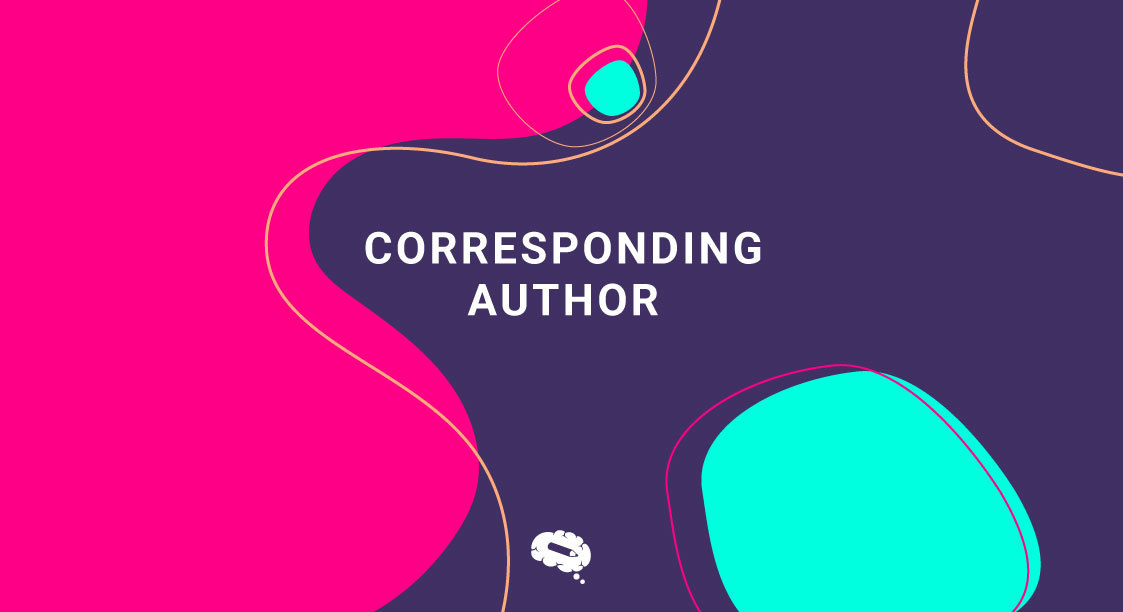Academic publishing is a complex process that includes paper submission, peer review, and publication. The involvement of the corresponding author is an important part of this process. On behalf of the research team, the corresponding author communicates with journal editors, reviewers, and co-authors. This person is frequently the primary point of contact for any manuscript-related queries or updates.
Given the significance of the corresponding author’s role, it is critical that those who take on this responsibility understand what is expected of them. The purpose of this article is to give a comprehensive assessment of the role of the corresponding author in academic publications.
Definition Of A Corresponding Author
The primary point of communication between the research team and the journal editors, reviewers, and readers is the corresponding author. The individual in question is often the main or senior author of a research publication and is in charge of handling manuscript communication.
The corresponding author is responsible for providing every necessary document and material to the journal editors, adhering to all ethical and legal guidelines, and ensuring that all co-authors are informed of the manuscript’s status and any updates that may emerge.
The name and contact details of the corresponding author are often given in the published article, allowing readers to direct any queries or inquiries to them.
Responsibilities Of A Corresponding Author
The corresponding author’s responsibilities in academic publishing are important and need close attention to detail. Some of the primary responsibilities of a corresponding author are as follows:
Manuscript Submission
Typically, the corresponding author is in charge of submitting the paper to the journal. For example, if this is the first time the paper has been submitted to a journal, the corresponding author may need to acquaint themselves with the publication’s submission procedures and prepare the manuscript properly. This may entail examining the journal’s publication guidelines, preparing the paper to a certain standard, and submitting any supplementary documents required by the journal.
Communication With Journal Editors
The corresponding author is in charge of engaging with journal editors on the research team’s behalf. For example, if the journal’s editors have queries about the paper or need extra material, the corresponding author may need to communicate with the other co-authors to provide a response. They may also be required to organize revisions or to supply extra information or data to support the publication.
Managing The Communication With Co-Authors
The corresponding author is responsible for interacting with the manuscript’s co-authors to ensure that everyone is up to date on the manuscript’s development and any updates that may occur.
For example, if the article is revised numerous times, the corresponding author may need to organize feedback and ensure that everyone is aware of the changes. They may also be required to provide updates on the development of the work, such as when it has been submitted or accepted for publication.
Ensuring Ethical And Legal Guidelines
The corresponding author is responsible for ensuring that the work complies with the publication process’s ethical and legal guidelines. Obtaining agreement from research participants, ensuring that the paper complies with ethical standards, and reporting any possible conflicts of interest are all examples of this.
For example, if the paper incorporates human subjects research, the corresponding author may be required to secure relevant permission forms and verify that the study follows ethical standards established by regulating organizations such as the Institutional Review Board (IRB).
Providing Contact Information
The name and contact details of the corresponding author are often given in the published article. For instance, if readers have any queries or concerns regarding the text, they can contact the author for clarification or more information.
Benefits Of Being A Corresponding Author
Being a corresponding author of a research publication can provide an academic researcher with many benefits, including:
- Visibility and recognition: As the corresponding author, the researcher’s name and contact information are typically included in the published article, providing them with increased visibility and recognition in their field.
- Leadership and responsibility: The corresponding author is often the lead or senior author of the research article, providing them with the chance to exhibit authority and take responsibility for the study’s publishing process.
- Networking opportunities: Communication with journal editors, reviewers, and readers can give networking opportunities and assist researchers in establishing contacts within their area.
- Improved writing and communication skills: Coordinating communication between co-authors, journal editors, and reviewers can help researchers develop their writing and communication skills.
- More control over the publication process: The corresponding author is in charge of managing the publication process and ensuring that the paper follows ethical and legal guidelines. This gives researchers more control over the publication process and helps guarantee that the work is published on time and in an ethical way.
- Potential for career advancement: Being published as the corresponding author of a research publication may be a beneficial addition to a researcher’s résumé and may help them acquire funding or advance their academic career.
In conclusion, being a corresponding author of a research publication may give an academic researcher many benefits, which might help them develop in their professional careers.
Tips For Becoming A Successful Corresponding Author
A successful corresponding author must pay close attention to detail, have great communication skills, and adhere to ethical and legal requirements. Here are some tips to help researchers succeed as corresponding authors:
- Acquaint yourself with the publishing process: Before submitting a manuscript, it is crucial to understand the journal’s submission requirements, formatting guidelines, and ethical guidelines. This can aid in the manuscript’s acceptance and publication in a timely and ethical manner.
- Coordinate communication among co-authors: Organizing the communication between co-authors is an important aspect of the publication process. Corresponding authors should communicate with their co-authors on a regular basis, offering updates on the manuscript’s development, and asking for feedback and input as needed.
- Develop strong writing skills: Corresponding authors should be able to clearly communicate their research findings to a wide range of audiences. This can assist in guaranteeing that the content is well-written and reader-friendly.
- Be responsive to journal editors and reviewers: Corresponding authors ought to respond to journal editors and reviewers in a timely and professional manner, addressing any issues or queries. This can assist in ensuring that the work gets evaluated and published as soon as feasible.
- Be organized and detail-oriented: Corresponding authors should be organized and detail-oriented, keeping track of deadlines, submission requirements, and other key publication-related elements. This can assist in ensuring that the paper is submitted on time and in the proper format.
- Seek feedback and support from colleagues and mentors: Throughout the publication process, corresponding authors should seek feedback and support from colleagues and mentors. This can assist in guaranteeing that the content is of good quality and fulfills the field’s requirements.
Mind The Graph Has 300+ Pre-Made Beautiful Templates For Professional Infographics
Mind the Graph contains over 300 pre-made templates developed exclusively for scientific communication. These templates cover a variety of themes and may be personalized with various colors, fonts, and graphics. The platform has an easy-to-use interface that allows scientists to easily build their own customized visuals and infographics.

Subscribe to our newsletter
Exclusive high quality content about effective visual
communication in science.





